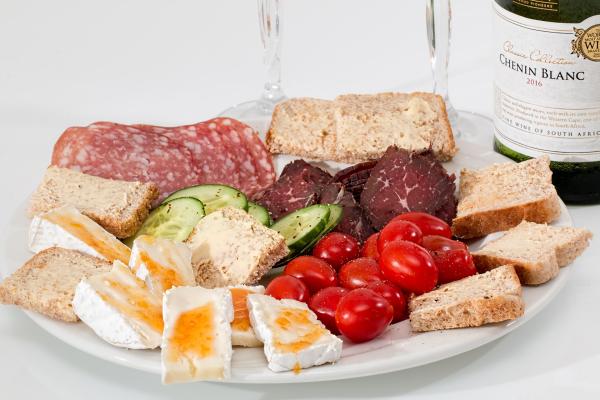The back cover states:
“If you have ever paused before biting into a food and wondered, should I eat this? - then this book is for you. Consumer Reports’ scientists, nutritionists, dieticians, editors, and culinary experts are on your side. They sift through the scientific studies. They conduct their own research. They separate food facts from fiction. They bring you clear, unbiased advice about healthy eating.”
Now the book makes considerable effort to offer a wide variety of good advice, which it does, but most of it is the same old dietary cliches. What Consumer Reports (CR) had the opportunity to do, but failed, was to use its consumer education platform to critically evaluate many of the common fallacies most consumers still embrace and provide a little more objective guidance.
Breakfast the most important meal of the day
There are many false assumptions related to this old cliché. However, the most significant to consider will be your hunger cues. If you’re not hungry, don’t eat. If you are, eat. It’s not that complicated. You have more than enough nutrients and calories stored in your liver, fat, and muscle tissue to maintain both your physical and cognitive functions while working at most job tasks for many hours. Choosing to wait and eat later, when you are hungry, becomes problematic only if you’re victimized by all the inappropriate food choices which may be available at the job site. Skipping breakfast does not apply to school-age children who will not have the opportunity to choose to eat when they are actually hungry.
Recommending organics over conventionally grown foods
The ACSH, as well as many other scientific organizations, has repetitively debunked this myth. For CR to repeat this nonsense, given the readily available contradictory evidence, is a sign of very shoddy investigative journalism. CR attempts to support their position by stating there is some evidence that organics contain more antioxidants.
Even if this were true, it is a moot point. All plants produce more antioxidants under stress, such as from pests, which would be true for organics due to their growing methods. However, more is not better, just more, as addressed here and here. It’s ironic that CR, whose motto is to make sure you get the best bang for your buck when you purchase products, proposes just the opposite in this case when they suggest organics over conventionally grown produce.
Regularly eating small amounts of processed meats increases your risk of cancer and heart disease. CR relies on invalid interpretations of observational studies. Here is a better analysis of this issue. CR also quotes Tufts University Friedman School of Nutrition Science and Policy Fang Fang Zhang MD, stating “there is no known safe level of processed meats.” Apparently, Dr. Zhang was not aware of one of the National Geographics glamorized Blue Zone cultures – with greater longevity and lower incidents of cancer and heart disease, routinely enjoys SPAM, as pointed out in my last article.
Beans: A True Superfood? Beans are truly deserving of the title.
CR suggests that “bean eaters may be less likely to develop type 2 diabetes.” This has nothing to do with any unique composition of beans other than replacing more calorie-dense foods and possibly lowering the prevalence of obesity, a significant risk factor. No argument that beans are excellent for you, but it’s the overall diet and lifestyle habits as usual, not a magical component that can be added to your diet like pixie dust.
Vegetables are healthier cooked.
CR tries to make the case that certain vegetables are better for you if cooked rather than eaten raw. CR states that the tips they provide will "unleash their full potential in terms of nutrition. …" Is this true, or is it just another spin on an irrelevant issue?
- Carrots: CR states, "cooking ignites this veggie's cancer-fighting carotenoids" by increasing the "concentration of carotenoids by 14 percent." First, carotenoids are one of many plant chemicals associated with reduced cancer rates among those who consume them. However, this is an association, not a cause-and-effect relationship. The synergistic effect of the many thousands of plant chemicals appears to be responsible for this effect and not the isolation of any specific one. To state that just because cooking increases the concentrations of carotenoids will "ignite" carrots cancer-fighting potential is spin. Obtaining more of any plant chemical does not necessarily equate with improved health. The carrot already provides more than enough carotenoids in any state of ingestion. More does not mean better; it's just more.
- Mushrooms: CR states, "a cup of cooked white mushrooms has about twice as much muscle-building potassium, heart-healthy niacin, immune-boosting zinc, and bone-strengthening magnesium as a cup of raw ones." Before you continue reading, stop for a moment and re-read what CR just stated. The glaring problem is related to one simple word: cup. A mushroom is 92 percent water by weight, so when you cook them, the volume is significantly reduced – so, of course, a cup of cooked mushrooms will have substantially more nutrients, it has likely four times the number of mushrooms as a cup of raw mushrooms.
- Spinach: CR states, "The leafy green is packed with nutrients [true], but you'll absorb more calcium and iron if you eat it cooked." This is blamed on the oxalic acid in spinach, commonly believed to bind with iron and calcium and prevent absorption. However, we get iron and calcium from other food sources, e.g., milk for calcium and any meat item or beans for your iron. And oxalic acid in spinach may not prevent iron absorption. A study done in 2008 using iron isotope absorption in humans concluded, “Oxalic acid in fruits and vegetables is of minor relevance in iron nutrition.”
- Asparagus: CR states, "Cooking these stalks raised the level of six nutrients, including cancer-fighting antioxidants by more than 16%." The value of individual antioxidants has been over-emphasized for well over a decade. It is one of the most overused cliches in nutrition science and a popular buzzword for marketing products. They are important, but all plants contain them, and they are readily supplied by any plant-based diet, cooked or otherwise. CR also states cooking asparagus "more than doubled the level of two types of phenolic acid, which some studies linked [my emphasis] to lower cancer rates." A "link" has nothing to do with cause and effect. I can cherry-pick anyone of the thousands of chemical compounds found in produce or grains and state the same thing. Diets high in phenolic acid simply reflect that those individuals consume many fruits and vegetables, which will reduce their cancer rates. Who eats uncooked asparagus anyway?
- Tomatoes: CR states, "heat increases a phytochemical, lycopene, that has been linked [my emphasis] to lower cancer rates and heart disease." See my comments above regarding "links." You need no more lycopene than is already found in a fresh raw uncooked tomato. If you believe there is magic in lycopene, try some ketchup.
Low-calorie sweeteners
CR states, “some studies suggest that they might not be better for you than sugar. The latest evidence suggests that low-calorie sweeteners might not lead to a positive effect on health or weight.” This is a significant misunderstanding by CR. CR does not provide a link to the “latest study,” so it is impossible to quibble over it directly. But there is plenty of documentation to illustrate that CR must have cherry-picked their reporting. An international panel of experts in food, nutrition, dietetics, endocrinology, physical activity, pediatrics, nursing, toxicology, and public health met in 2017 to develop a Consensus on the use of low- and no-calorie sweeteners (LNCS) as substitutes for sugars and other caloric sweeteners. They concluded
LNCS are some of the most extensively evaluated dietary constituents, and their safety has been reviewed and confirmed by regulatory bodies globally …LNCS in weight reduction programs that involve replacing caloric sweeteners with LNCS in the context of structured diet plans may favor sustainable weight reduction. Furthermore, their use in diabetes management programs may contribute to a better glycemic control in patients, albeit with modest results. LNCS also provide dental health benefits when used in place of free sugars; It is proposed that foods and beverages with LNCS could be included in dietary guidelines as alternative options to products sweetened with free sugars.
Another consensus workshop in 2018 concluded:
"Low Calorie Sweeteners (LCS) can be beneficial for weight management when they are used to replace sugar in products consumed in the diet (without energy substitution). The available evidence suggests no grounds for concerns about adverse effects of LCS on sweet preference, appetite or glucose control; indeed, LCS may improve diabetic control and dietary compliance. Regarding effects on the human gut microbiota, data are limited and do not provide adequate evidence that LCS affect gut health at doses relevant to human use."
A more in-depth review of this issue can be found here.
CR book does not separate food facts from fiction as it states. Outside of the common-sense nutritional advice it provides, it is no more helpful to anyone reasonably familiar with appropriate eating habits than the nutritional facts on a water bottle label.




